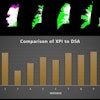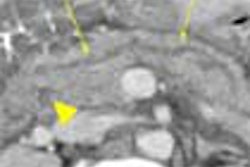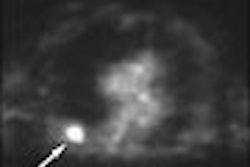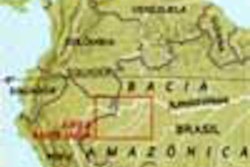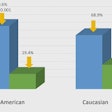Results of a retrospective analysis suggest that renal artery stenosis (RAS) is an independent risk factor for cardiovascular disease, but not for cerebrovascular disease.
Dr. John Rundback, associate professor of radiology at the College of Physicians & Surgeons of Columbia University in New York City presented the study results at the 2004 Society of Interventional Radiology (SIR) meeting in Phoenix.
Rundback and colleagues reviewed aortograms from 300 patients in an 840-pateint registry. One hundred and forty-three patients had RAS of more than 50%.
They then used the hospital’s medical information system to identify patients who had discharge ICDs for cardiovascular conditions such as unstable angina, chronic ischemic heart disease, heart failure, diabetes, hypertension, or end-stage renal disease. The group performed univariate and multivariate analyses of cardiovascular prevalence in patients with RAS and those without RAS.
After correcting for factors such as hypertension and diabetes, "evidence of any RAS was associated with a 2.03 odds ratio for cardiovascular disease, which was statistically significant," Rundback said.
Moreover, he said that bilateral RAS was associated with a 5.68 odds ratio for chronic ischemic heart disease, congestive heart failure and end-stage renal disease. When the analysis was performed for stroke, "the association fell out," he said.
The study proved controversial during the SIR session. Moderator Dr. Timothy Murphy of Rhode Island Hospital in Providence said it was impossible to draw such strong conclusions from a retrospective study.
"This study shows, at best, an association, which indicates the need for more study," he said, adding that study does not answer the question, "which came first: the RAS or the heart disease?"
Nonetheless, Murphy concurred that "RAS is important per se, is bad per se." He and Rundback agreed that the ongoing Cardiovascular Outcomes in Renal Artery Lesions (CORAL) study is likely to finally determine the role of RAS in cardiovascular disease.
The CORAL study is funded by the National Health Lung and Blood Institute and has already enrolled more than 1,000 patients, Rundback said. CORAL is randomizing patients to optimal medical therapy or best medical therapy plus endovascular therapy.
Session co-moderator Dr. Alan Matsumoto, professor and director of the division of angiography, interventional radiology and special procedures at the University of Virginia Health System in Charlottesville commented that Rundback’s study "corroborates other known data, and has pretty much validated that atherosclerotic RAS in and of itself is a risk factor for cardiovascular morbidity and decreased survival."
Moreover, he said that RAS appears to play a role in cardiovascular disease risk that is "separate from its association with hypertension and separate from its association with renal insufficiency."
He added that it was also interesting that patients with bilateral RAS were more likely to have chronic ischemic heart disease and to go onto both heart failure and ESRD, while unilateral RAS was more often associated with hypertension.
By Peggy PeckAuntMinnnie.com contributing writer
April 19, 2004
Related Reading
Radiologists correlate coronary calcium with other CVD markers, April 6, 2004
Brazilian sonologists offer technique for suspected RAS, June 6, 2003
Extent of coronary disease predicts presence of renal artery stenosis, November 14, 2002
Copyright © 2004 AuntMinnie.com



